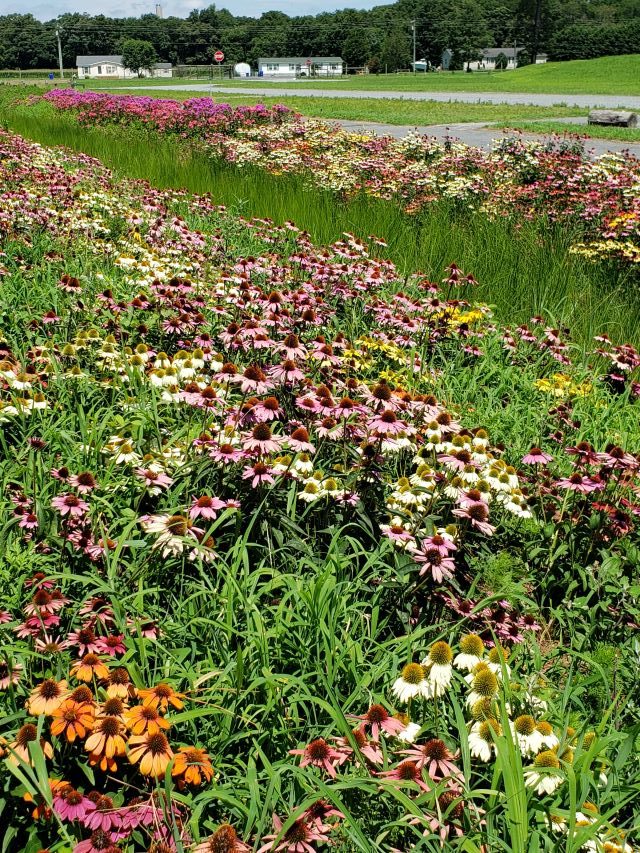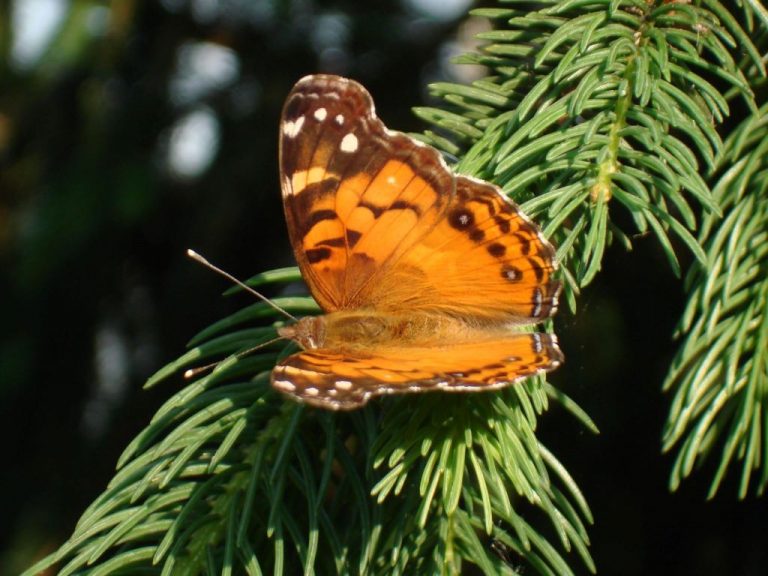What’s all the buzz about native plants, and why are they a big deal? After all, what makes a coneflower better than a carnation? Well, native plants have many attributes that include being easy to grow, and environmentally-friendly, requiring less maintenance, and saving money. The coneflower will be visited by pollinators and contribute to a healthy ecosystem while the carnation might just as well be made of silk.
Generally, native plants are those that were present in a specific region before European exploration. Since they have existed in an area for thousands of years, they are better adapted to the conditions of that region such as soil type and climate, making them easier to grow. They have been thriving just fine without human intervention for millennia and require no fussing.
While exotic plants (non-natives) might wither during a year of drought, native plants have adapted to the local weather conditions, however extreme, that nature has thrown at them. Foreign plants will need supplemental water, while natives have grown here before European settlement when no one turned sprinklers on for them.
A primary reason why ever-increasing numbers of gardeners are turning to native plants is because they are environmentally friendly, providing sustenance for birds, butterflies, bees and other insects in a world that is ecologically out-of-balance. Natives help create habitats for these creatures, offering them nectar, pollen and seeds. In our quest for beautiful gardens, we are often seduced by lovely flowers that offer nothing to the insects responsible for maintaining life on earth.
After all, food webs make the world go round with predator/prey relationships, where smaller life forms provide food for higher ones, including humans. Gardens are part of the food web. For example, caterpillars feed on the leaves of plants and in turn are devoured by birds.
Sadly, the aforementioned wildlife are all in decline, with Science magazine reporting a loss of 3 billion birds – 29% of North American birds- since 1970. Monarch butterflies recorded a shocking 90% decline over the past 20 years, and a German study found that flying insects declined 75% over 27 years.). Alarmingly, more than half of our native bee populations are in decline with one-quarter of native bee species in danger of extinction. What happens when there are no bees to pollinate our food? Could the loss of insects–a major part of bird diets—help explain the loss of birds? Do you want a garden that is a fly-through zone that might as well be a desert or one where hummingbirds, bees and butterflies will linger to collect nectar? Think about how much more interesting it is to step outside your home into a landscape where majestic butterflies flit about. This can be achieved by designing with native plants.
Natives don’t need fertilizers and pesticides because once again they have adapted to our region’s conditions. This helps improve our environment by reducing the amount of toxic chemicals that seep into our soils and are flushed into our rivers and lakes by heavy rains. The summer of 2019 showed us the dangers of these chemicals washing into our waterways with 40 lakes in New Jersey experiencing harmful algal blooms that, in several cases, resulted in their closure to swimming and fishing. One of the causes of these algal blooms was runoff from lawn fertilizers. The NJ Department of Environmental Protection lists using native plants as one of the solutions for preventing algal blooms.
Exotic plants can be invasive and ruin our forests. They escape from home gardens into nearby woods. One example is the ubiquitous Japanese barberry, whose seeds end up in wooded areas creating impenetrable thickets. Our forests have become overrun by barberry and other invasives that outcompete native plants and don’t offer any benefits to wildlife. The next time you take a walk in a wooded area, see how many foreign plants such as Japanese barberry you come across. You might not even recognize it because those that sprout from seed tend to lose the genes for their usual burgundy color and are instead green.
Further complicating the forest issue is the out-of-control deer population which is exponentially higher than the sustainable level. Deer evolved with natives and these plants make up most of their diet. When deer eat natïve plants in the wild, they are permitting invasive exotics such as Japanese barberry to replace them. As natives become scarcer in the wild due to ravaging deer, it becomes even more essential that home gardeners plant and protect native plants in their own gardens.
What about saving money? If the size of one’s lawn is reduced and replaced with natives, there are several areas for savings. One is that natives don’t require fertilizers or pesticides. In addition, it is estimated that lawns consume approximately 30% of the water used on the East Coast. Instead of a large thirsty lawn, natives need little supplemental water, reducing your water bill. You’ll also save on the cost of gasoline for lawnmowers and leaf blowers, which consume 800 million gallons of gas per year while producing 5% of the nation’s air pollution!
By reducing the size of your lawn and replacing it with natives, you will be a part of the solution instead of the problem. Your garden will be just as beautiful, if not more so, and you will be able to enjoy the entertainment provided by birds, butterflies, bees and other fascinating insects. As the cold weather keeps us indoors, now is a great time to rethink your plant selections for this summer and plan a garden that will contribute to a healthy, functioning ecosystem.
For more information on native plants, visit Native Plant Channel on YouTube and Facebook.



